How to Take Care of Air Plants?
Yipee! After days of waiting, your air plants finally arrived!
Have you thought of any cute names? Hmmm, I suggest you do the naming later.
You still have a lot of things to do.
Now
After unpacking, prepare them a water bath. Yes! Your air plants would need that good soak for 20-30 mins. Afterward, wobble those cute things off to remove the excess water.
And I bet you already found a space with bright light because that would be the perfect spot for air plants to thoroughly air circulate.
These were just surface knowledge that you need to learn when grooming air plants.
So fasten your seatbelt.
I will bombard you with information that will help you grow the best air plant there is in the neighborhood!
Back to Home Page: ShaneTurrell
Air Plant Care Instructions
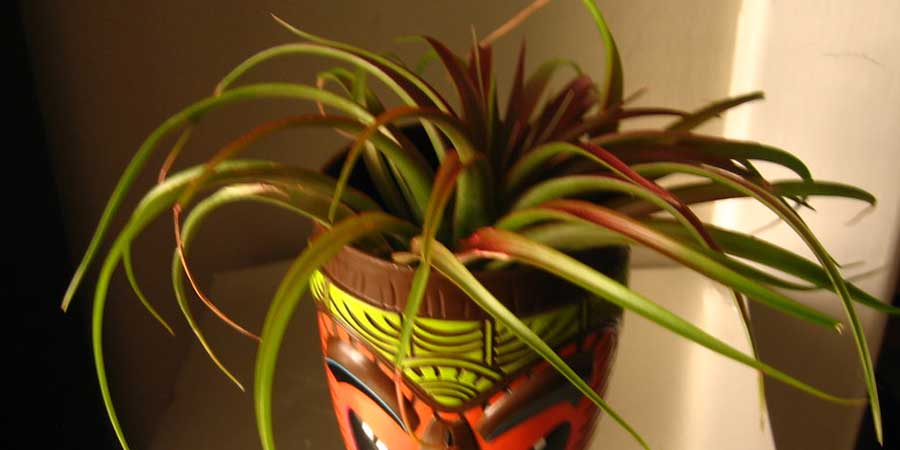
You see
Tillandsia or air plants are unique plants that can quickly grow with proper care and consideration.
Despite being called air plants, they still need sufficient nutrients found in soil to thrive– but this time, they acquire it through the air.
And wanna know how they do it?
They have these trichomes– or the tiny vessels on their leaves, which allows them to catch moisture and nutrients in the air.
And they are epiphytes or the type of plants that are not parasitic yet would need a host to act as their home.
Cool, right?
Now, if you’re about to grow one, here are instructions that would surely come in handy.
Environment:
Well, this one is a critical factor that you need to consider. Environment plays a crucial role in its survival.
And remember
As an owner, assessing the environment is your responsibility.
It would give you an idea of the particular support you need to provide. And it would also tell you the amount of watering and the specific techniques you should use to make sure that they acquire the sufficient moisture they need.
So, if you live in an area with a warmer climate, you would need to soak and mist them more frequently. Do the opposite when you’re in areas with high humidity.
Air Plant Species:
Here’s an advice
Do not just pick an air plant without actually knowing what it is.
Even if all air plants are Tillandsia, various species differ in size, shape, and growth style. Also, they tend to vary in trichrome concentration.
Some of it would need more sunlight and lesser water like the silver-leaved variant. And contrastingly, the darker Tillandsia would often need more moisture and could quickly wilt when placed in a spot where there is direct sunlight.
So what does it mean for you?
It means each species would require specific care, and this needs thorough consideration.
So, choose your preference wisely!
Light
Regarding light, air plants generally grow in a bright environment, not directly exposed to sunlight.
Is this achievable?
Of course, it is! Keeping it indoors is an option, and fluorescent lights could do the job for you. You can place it three to five feet from the window to stay away from direct daylight heat.
But if you have less space, you could still put them in a spot with direct sunlight. Just make sure to put them in a shaded area. You can try misting them every other day.
And be mindful of the air plant variety you have and choose the one that would prefer the outside environment.
Water
Hey, you might be thinking that air plants, unlike other plants, would only need air and would not need to be watered.
Well, you got it wrong,
Though they are not susceptible to drought, they could die without sufficient water.
Here’s what you need to do
You need to check what variety of air plants you have and water them appropriately.
But the good news?
These types of plants would forgive you for slacking off. They usually don’t mind if you’d go on vacation for a few days. Still, you need to be mindful of the watering schedules.
The most recommended practice is to water them in the morning and upon soaking, immediately rinse off the excess water since it could rot its roots, damaging the plant.
There’s also the dunking method where you put the plants in the water several times and momentarily shake it off to remove water excess.
If ever you see the plant wilting, the tendency is it needs further hydration. In this case, leave it overnight in a bowl of water. It must have healthy opened leaves, not curved ones.
Take note!
You don’t want to plunge the flowers into the water because the excess moisture might cause them to rot.
Air
As it is an air plant, yes, the most crucial variable for this kind of plant is, drumrolls… air!
The unique ability this plant has is the utilization of air circulation to survive. So, it needs a clean environment to survive. You must ensure that they get sufficient air right after being watered, and it should last for four hours.
Make sure to put this in mind.
Place them in open containers since enclosed ones can restrict their access to air circulation. Upon resting it there, make sure that there is no water excess.
Terrariums/Globes
Well, only if you want to be stylish and you want to give your air plant a new look, you can try terrariums and globes!
But a new container means new treatments and watering patterns.
Well, don’t budge.
The adjustment will not be that hard. You only have to proceed to regular watering while giving your plant sufficient time to be dry. It usually takes four hours.
Jot this down
There should be misting procedures periodically if you have air plants in globes or terrariums. The amount of misting must depend on the size and compaction of the space. The larger the globe, the more frequent the misting. In larger terrariums, few sprays a week will do to allow more air circulation.
But be careful!
Do not over mist. Too much moisture might rot the plant.
Sea Urchins
Assuming that you have bought a sea urchin kit upon purchasing the air plant, you must know these few tips.
Have the plant removed from the urchin when dipping it into the water. Also, make sure that you have dried it well before returning it to the urchin.
And why is that?
It’s because you will have difficulty in removing any water excess from the urchin afterward. And keeping it there will surely damage the plant.
But, you can still do misting in your sea urchin once in a while
Temperature
Here’s what you need to know
Generally, air plants are best grown in warm conditions. The exact temperature must be between fifty to ninety degrees Fahrenheit.
If you reside in areas without the winter season, you can put them outside the whole year-round. But, you might think of putting them on the balcony during summer. They usually hate exposure to heat extremes or direct sunlight.
But with freezing conditions, here’s the option for you.
Keep the air plant indoors with fluorescent light to keep it warm and comfy.
Fertilizer
Here’s the good thing.
You don’t need to go to gardening shops to buy fertilizers. Raising air plants do not require one. But, if you’re really looking forward to keeping your plant in its optimal condition, you can still apply fertilizers.
So what do they do?
Well, they keep your plant in its best condition to reproduce and bloom. There are Bromeliad fertilizers that can be applied once a month. You could also use some indoor plant fertilizers that contain low levels of copper.
But do not brush this off.
Air plants are susceptible to chemicals, so make sure only to apply small quantities.
Trimming
Just like any other plant, your air plant would probably need some trimming over time.
There will be excess leaves and roots here and there, and if you don’t want them messy, you have to learn how to trim them well.
And here’s the proper way to do it
The first is to get rid of all the withered leaves with scissors. You can style your trimming by cutting at a certain angle to give it a natural appearance. You don’t have to keep the roots. You can cut from the base of the plant, and it could still grow!
The only function of roots is to attach the plant to the host, and you can simply do this with a superglue.
Easy peasy.
Pups
The air plant’s blooming is a must-to-see, but it is also the time where offshoots appear. You can easily distinguish the leaves from the “pups” with their distinct form of their own.
And be mindful!
When it becomes too big that it reaches a third of the parent air plant’s size, you can detach it away. The process should be done smoothly through a gentle twist with a careful downward push. You could also try using a razor blade to slice the pup from its stem.
Then, you can plant the pup and raise it separately.
If ever you decide not to remove the “pup,” it will just turn into a “clump” where it continually blooms until the blooming season ends.
The decision is yours on what to do with your pup!
Why do my air plants keep dying?
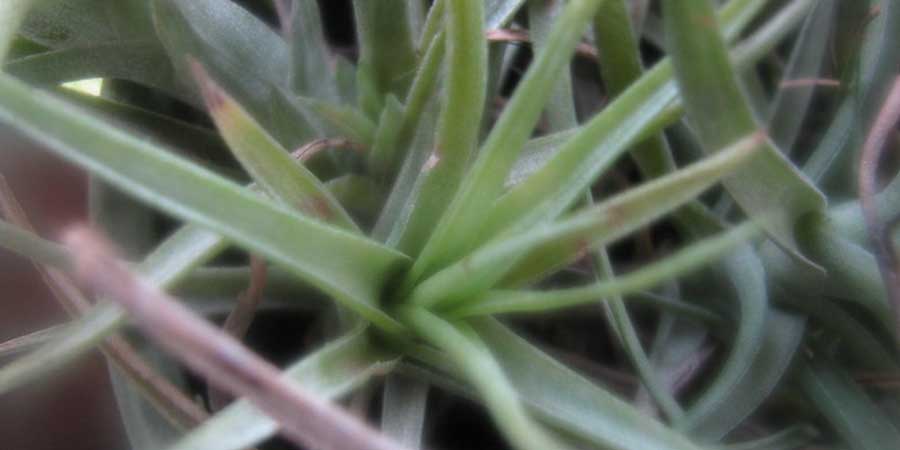
Let’s be straight.
Having your air plants dying is the worst probable circumstance imaginable. So, to prevent this scenario from happening, it is essential to follow all the stated procedures.
But to answer the question.
No particular or definitive answer would specifically kill your plant. But, in cases of air plant’s death’s here are few factors that you need to review:
- Water
Over and under-watering has the potential to kill your plant. It is necessary to keep it hydrated but not too much since it can also rot the plant.
You could also use distilled water if you feel unsafe with tap water.
And keep this in mind!
Do water baths once per week and make sure to dry it well upon soaking.
You should be twice more cautious when using enclosed containers since it is prone to moisture that might decay the plant.
- Salt and chemicals
Salts can potentially kill air plants. Since they are not on the soil, they don’t possess the filtering mechanism that protects the other plant from salt exposure. It will render its trichomes incapable of absorbing water and nutrients.
Oh, another thing!
Also, chlorine, which is in most tap waters, has the same effect on your plant. The safe to use waters are rain, pond, well, lake, or unsaturated mineral water.
So make sure to protect your plant from these chemicals!
- Intense heat
Yup! Air plants are heat sensitive plants since they rely on the atmospheric condition to survive. And direct sunlight and intense heat will diminish the available moisture, leaving your plant dehydrated, withered, or burned.
Here’s more
Sometimes, glass containers can get very hot when exposed to sunlight– like a miniature greenhouse.
When placed outside, the air plants need a shady area to protect themselves from direct heat.
So just keep it cool!
- Insufficient light
These cute little things are scaredy-cats. The proper air plant care means providing sufficient light to survive.
Either indirect light or LED bulbs, your air plants would always need lighting.
They don’t do well in dark areas, and without light exposure, they will have diminishing health and eventually die.
So, try to put them in areas that are bright enough for them to grow and develop.
- Freezing Temperature
Intense temperature goes in both ways, too hot or too cold. Air plants do not have the mechanism to survive in these conditions.
In terms of the freezing temperature, air plants will die if exposed below thirty-two degrees.
But here’s the catch
Some of its variety, like Spanish Moss, has greater freezing tolerance that it can withstand 10-20 degrees.
So, here’s the best air plant for you if you live in an area with freezing temperature.
- Fertilizer Burn
Fertilizers are often not applied to air plants due to the risk of their high concentration that might kill the plant.
But here’s how you deal with it
You can use the misting opportunity to fertilize the plant. But this would rely entirely on how you mixed and diluted the water and fertilizer.
The right amount should be a quarter tsp. of fertilizer in every gallon of water.
Remember not to overdo it!
- Lacking or Excessive Air Circulation
Since air plants rely on air, the moisture in the atmosphere is crucial for your plant’s survival.
But do you know?
Not all of them like humidity. For this reason, you need to fan or put the air plant near the ceiling fan when drying. Misting and soaking must not leave any moisture in the air plant to avoid root rot.
- The Air Plant’s Life Cycle
Things come and go.
They just die of old age, and this is an anticipated outcome. After finishing the cycle of development, budding, reproducing, and giving off buds and offshoots, they reach the peak of their lives.
But don’t be sad!
An air plant like yours would leave their “pups” before dying.
So, you have to make sure that you don’t turn your pups into clumps, and you have prepared your new air plant for a whole new cycle of growth!
How do you know if air plants need water?
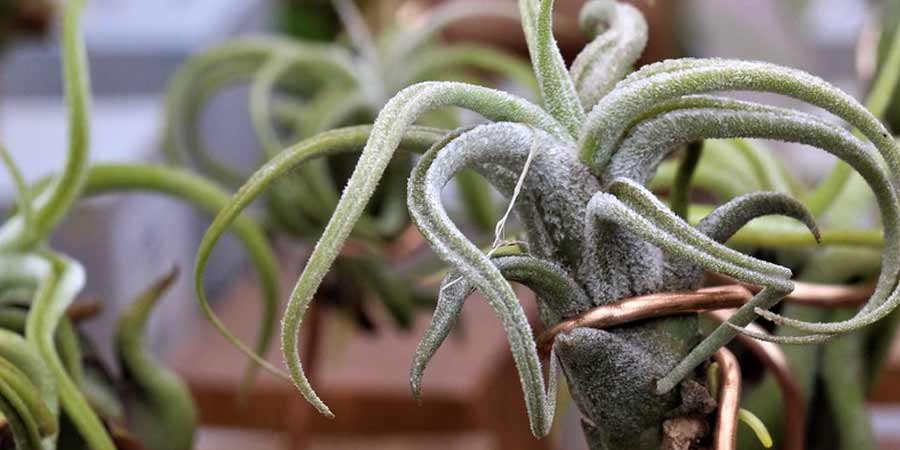
The plants should acquire enough water once every week. Twice or thrice is the most preferred times. Sometimes, you have to soak it for two hours in two or three weeks.
When you are in a warmer region, you must frequently mist and water your air plant for its sustenance.
But here’s the answer
You will know if they had enough water if their leaves turned stiffer after dunking them into the water. It follows a heavy feeling, which is often the cue that they’re full.
On the other hand, if they’re still soft and light, then it means they still need further hydration. Other signs would include wrinkling and crumpling of leaves.
Do air plants get bigger?
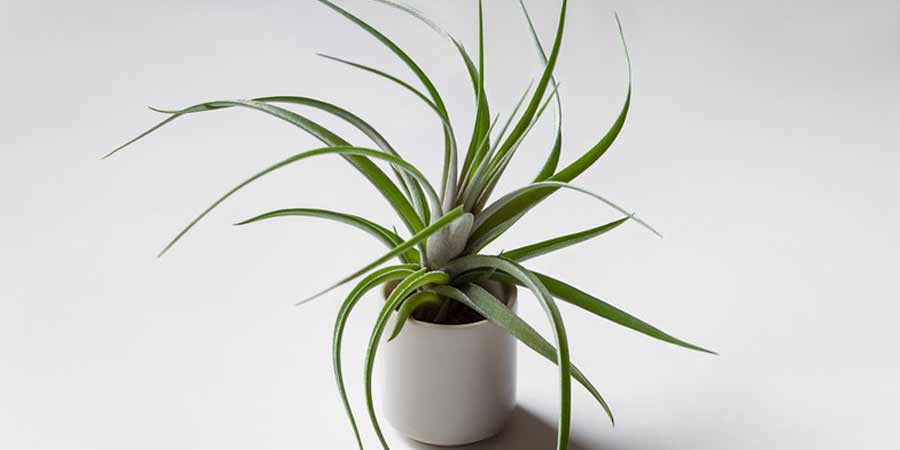
You must’ve asked this question after noticing that your plant looks like it wasn’t growing.
But let me tell you
Tillandsia has a slow pace when it comes to growing. And this is the reason why some people would choose this plant for display. They specifically preferred its size so that they can flaunt it indoors.
Its growth could also depend if it is planted directly as a seed or if it is the “pup.” Pups are known to grow much slower than seeds.
Also, seed-grown plants are a better specimen for air plants since they immediately bloom in the middle of the cycle and quickly produce pups independently.
How do you feed air plants?
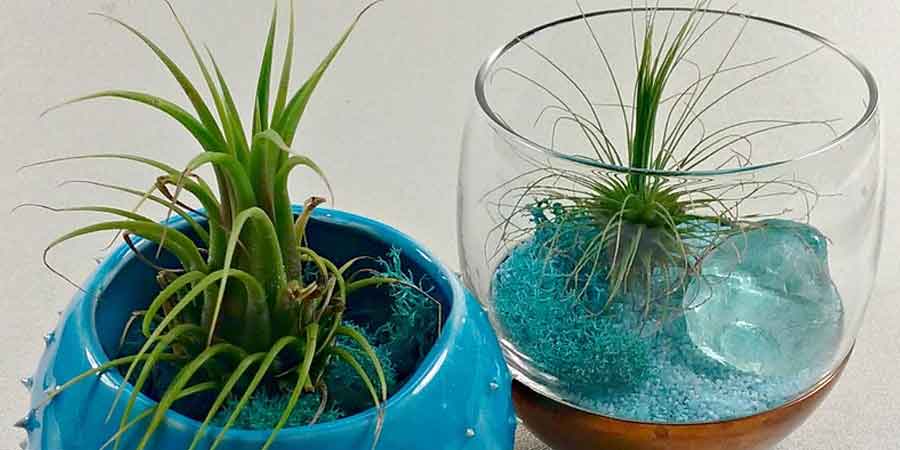
Aside from routinely providing water, you feed air plants with fertilizers.
But here’s the catch
It wasn’t dependent on fertilizers and could undoubtedly grow without it. Yet, some people still chose to supplement them with one.
Why?
The only answer to that is because they encourage blooming. It helps in the production of pups, which is useful if you want to reproduce them.
Conclusion: How to Take Care of Air Plants
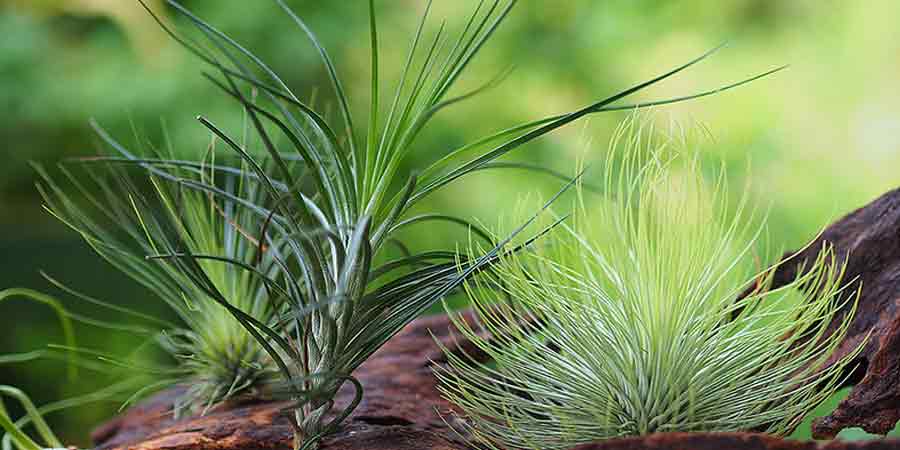
Now you’re ready!
As you see, raising the air plant isn’t hard. You just have to remember these three things: Water, Light, and Air.
Your role as the owner is to assess your home environment and check these crucial variables. Then, adjust it to the most desirable condition that would ensure your plant’s growth.
With this guide, these will not be difficult for you!
And oh,
You can do the naming now.
Happy gardening!
Related: How to Plant Trees in Stardew Valley
